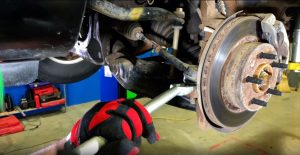
When replacing a car’s fender panel, you typically have two options: Original Equipment Manufacturer (OEM) or aftermarket parts. OEM fender panels are produced by the same manufacturer that built your vehicle and are designed to match the exact specifications of the original part. Aftermarket panels, on the other hand, are made by third-party companies and may vary in design, fit, and material quality. Identifying which type your car has is important for ensuring structural integrity, proper alignment, and visual consistency with the rest of the vehicle. For expert advice and installation, visit Auto Repair in Centennial, CO.
Visual and Fitment Clues
One of the clearest ways to spot an aftermarket fender is by examining its fit and finish. Factory fenders tend to align seamlessly with adjacent panels and trim. Gaps will be tight and uniform, and the panel will sit flush with the doors and hood. Aftermarket fenders, even if they are good quality, can sometimes leave uneven panel gaps or require slight modifications to fit properly. Also, look for signs of overspray, slight misalignment with bolt holes, or subtle differences in curvature, these can all suggest an aftermarket replacement.
Material and Paint Differences
OEM fenders are typically made from high-grade steel or aluminium, consistent with the vehicle’s original build quality. Aftermarket panels may be made from thinner or less durable materials, making them more susceptible to denting or rust over time. Paint is another giveaway: OEM panels will have a factory-applied finish with perfect color matching and depth. Aftermarket fenders often require repainting, which can sometimes result in subtle mismatches in tone or texture especially under direct sunlight. If the paint looks slightly off from the rest of the car, the panel may not be original.
Part Numbers and Stamping
Factory panels usually have identifiable part numbers or branding stamped on the inside surface. Look for an OEM logo, serial number, or barcode printed or etched into the metal. These markings confirm authenticity and can be cross-referenced with dealership databases. Aftermarket fenders often lack these identifiers or use generic part numbers. If you have access to the inner side of the panel, this is one of the most reliable ways to determine its origin.
Conclusion
Knowing whether a fender is factory or aftermarket impacts more than aesthetics, it can affect your car’s resale value, performance in a collision, and how insurance claims are handled. Factory panels are engineered to meet crash safety standards, while some aftermarket versions may not offer the same level of impact resistance. In certain cases, using OEM parts may be required to maintain warranty coverage. Whether you’re buying a used car or getting collision repairs, recognizing the type of fender panel installed ensures you make informed decisions for your vehicle’s safety and longevity.






